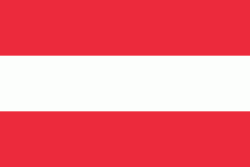Liechtenstein Museum (Liechtenstein Museum)
The Liechtenstein Museum is a private art museum in Vienna, Austria. It contains much of the art collection of its owners, the Princely Family of Liechtenstein, rulers of the principality of Liechtenstein. It includes important European works of art, forming one of the world's leading private art collections. Its highlight used to be Leonardo da Vinci's portrait of Ginevra de' Benci, which was acquired in 1967 by the National Gallery of Art in Washington, D.C.
The museum, which was originally open to the public from the early 19th century until the Anschluss of 1938, had various locations, including the Liechtenstein Garden Palace (Gartenpalais) at Fürstengasse 1 in Vienna's 9th District (Alsergrund), and the Liechtenstein City Palace (Stadtpalais) at Bankgasse 9 in Vienna's 1st District (Innere Stadt). The museum was reopened on 29 March 2004 in the Garden Palace, but after battling with low visitor numbers, it was closed for regular visiting by the public in November 2011. According to the official website of the Garden Palace, "the highlights of the princely collections can be viewed exclusively as part of an event package or a pre-booked guided tour".
Objects from the collection have been sent on touring exhibitions to museums in other countries, especially the United States. In particular, displays are regularly mounted at the Kunstmuseum Liechtenstein in Vaduz, which is otherwise a gallery for a modern art collection donated to the principality of Liechtenstein by the ruling family. Other works from the collection fill the palaces and residences of the Princely Family in Liechtenstein and Austria.
A catalogue of the artists (with short biographies) featured in the gallery at the time of Prince Joseph Wenzel was compiled by Vicenzo Fanti in 1767.
The Gartenpalais was built by Prince Johann Adam Andreas von Liechtenstein, who commissioned its design and construction from Domenico Egidio Rossi; the shell was finished in 1700. Painted décor in the Gartenpalais was contributed by Marcantonio Franceschini, Antonio Bellucci, Andrea Pozzo and Johann Michael Rottmayr. Sculpture came from Giovanni Giuliani and his studio, and stucco from the stuccator Santino Bussi.
The museum, which was originally open to the public from the early 19th century until the Anschluss of 1938, had various locations, including the Liechtenstein Garden Palace (Gartenpalais) at Fürstengasse 1 in Vienna's 9th District (Alsergrund), and the Liechtenstein City Palace (Stadtpalais) at Bankgasse 9 in Vienna's 1st District (Innere Stadt). The museum was reopened on 29 March 2004 in the Garden Palace, but after battling with low visitor numbers, it was closed for regular visiting by the public in November 2011. According to the official website of the Garden Palace, "the highlights of the princely collections can be viewed exclusively as part of an event package or a pre-booked guided tour".
Objects from the collection have been sent on touring exhibitions to museums in other countries, especially the United States. In particular, displays are regularly mounted at the Kunstmuseum Liechtenstein in Vaduz, which is otherwise a gallery for a modern art collection donated to the principality of Liechtenstein by the ruling family. Other works from the collection fill the palaces and residences of the Princely Family in Liechtenstein and Austria.
A catalogue of the artists (with short biographies) featured in the gallery at the time of Prince Joseph Wenzel was compiled by Vicenzo Fanti in 1767.
The Gartenpalais was built by Prince Johann Adam Andreas von Liechtenstein, who commissioned its design and construction from Domenico Egidio Rossi; the shell was finished in 1700. Painted décor in the Gartenpalais was contributed by Marcantonio Franceschini, Antonio Bellucci, Andrea Pozzo and Johann Michael Rottmayr. Sculpture came from Giovanni Giuliani and his studio, and stucco from the stuccator Santino Bussi.
Map - Liechtenstein Museum (Liechtenstein Museum)
Map
Country - Austria
 |
 |
| Flag of Austria | |
Austria emerged from the remnants of the Eastern and Hungarian March at the end of the first millennium. Originally a margraviate of Bavaria, it developed into a duchy of the Holy Roman Empire in 1156 and was later made an archduchy in 1453. In the 16th century, Vienna began serving as the empire's administrative capital and Austria thus became the heartland of the Habsburg monarchy. After the dissolution of the Holy Roman Empire in 1806, Austria established its own empire, which became a great power and the dominant member of the German Confederation. The empire's defeat in the Austro-Prussian War of 1866 led to the end of the Confederation and paved the way for the establishment of Austria-Hungary a year later.
Currency / Language
| ISO | Currency | Symbol | Significant figures |
|---|---|---|---|
| EUR | Euro | € | 2 |
| ISO | Language |
|---|---|
| HR | Croatian language |
| DE | German language |
| HU | Hungarian language |
| SL | Slovene language |















